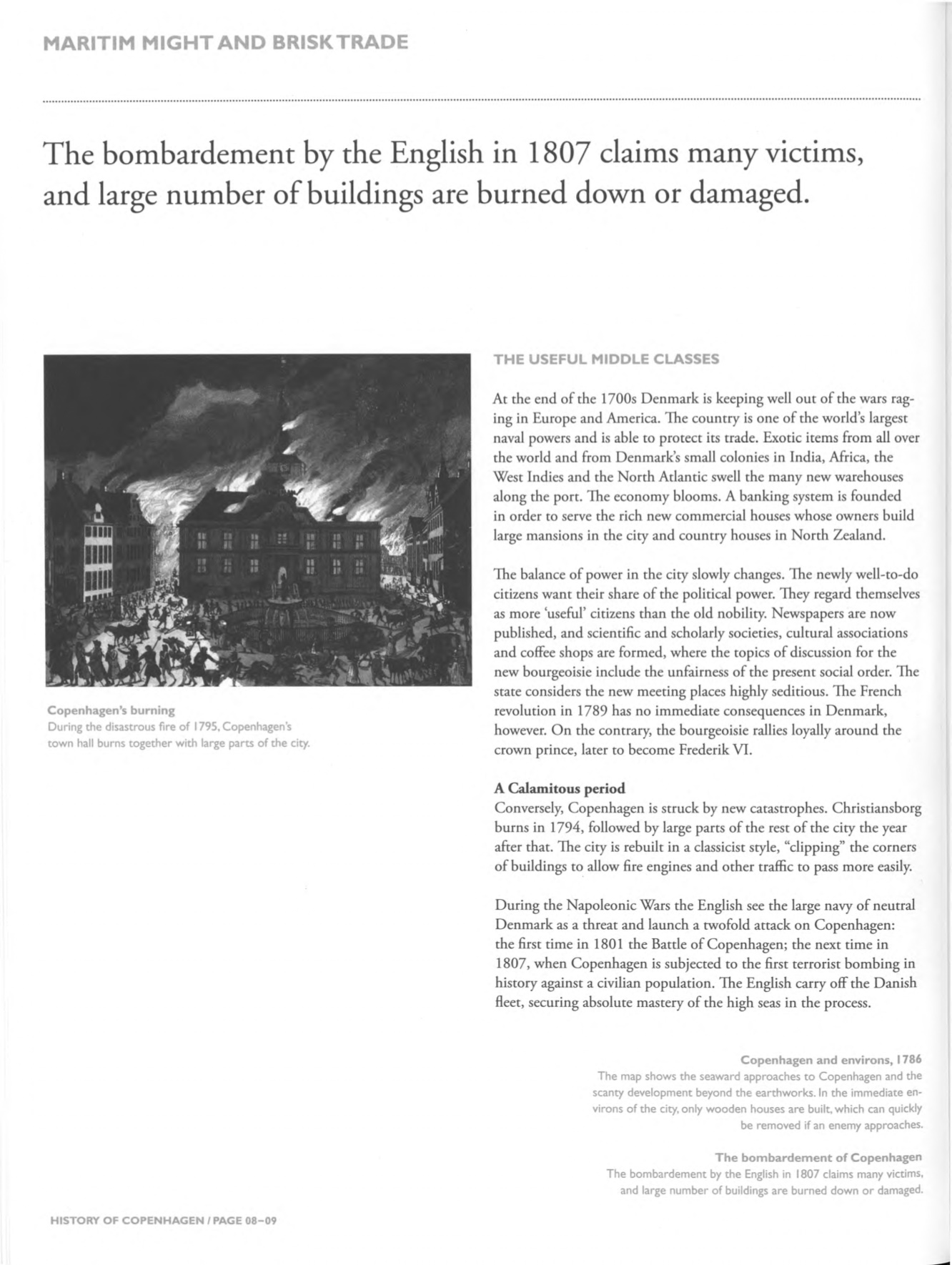

MARITIM M IGHT AND BRISKTRADE
The bombardement by the English in 1807 claims many victims,
and large number of buildings are burned down or damaged.
THE USEFUL M IDDLE CLASSES
At the end of the 1700s Denmark is keeping well out of the wars rag
ing in Europe and America. The country is one of the world’s largest
naval powers and is able to protect its trade. Exotic items from all over
the world and from Denmark’s small colonies in India, Africa, the
West Indies and the North Atlantic swell the many new warehouses
along the port. The economy blooms. A banking system is founded
in order to serve the rich new commercial houses whose owners build
large mansions in the city and country houses in North Zealand.
Copenhagen’s burning
During the disastrous fire of 1795, Copenhagen’s
town hall burns together with large parts of the city.
The balance o f power in the city slowly changes. The newly well-to-do
citizens want their share o f the political power. They regard themselves
as more ‘useful’ citizens than the old nobility. Newspapers are now
published, and scientific and scholarly societies, cultural associations
and coffee shops are formed, where the topics of discussion for the
new bourgeoisie include the unfairness o f the present social order. The
state considers the new meeting places highly seditious. The French
revolution in 1789 has no immediate consequences in Denmark,
however. On the contrary, the bourgeoisie rallies loyally around the
crown prince, later to become Frederik VI.
A Calamitous period
Conversely, Copenhagen is struck by new catastrophes. Christiansborg
burns in 1794, followed by large parts of the rest of the city the year
after that. The city is rebuilt in a classicist style, “clipping” the corners
of buildings to allow fire engines and other traffic to pass more easily.
During the Napoleonic Wars the English see the large navy of neutral
Denmark as a threat and launch a twofold attack on Copenhagen:
the first time in 1801 the Battle of Copenhagen; the next time in
1807, when Copenhagen is subjected to the first terrorist bombing in
history against a civilian population. The English carry off the Danish
fleet, securing absolute mastery of the high seas in the process.
Copenhagen and environs, 1786
The map shows the seaward approaches to Copenhagen and the
scanty development beyond the earthworks. In the immediate en
virons of the city, only wooden houses are built, which can quickly
be removed if an enemy approaches.
Th e bom bardem ent of Copenhagen
The bombardement by the English in 1807 claims many victims,
and large number of buildings are burned down or damaged.
HISTORY OF COPENHAGEN
I
PAGE 08-09
















